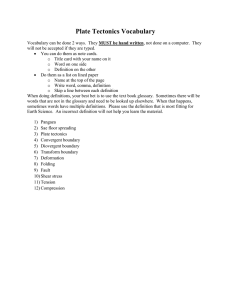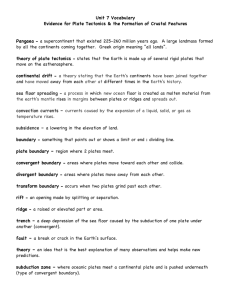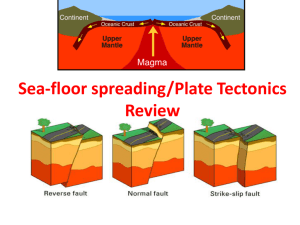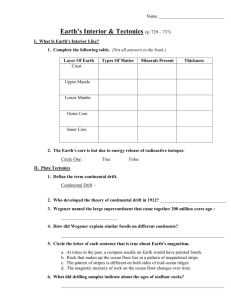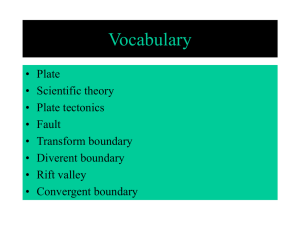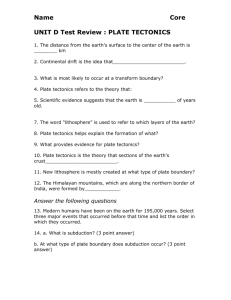Plate Tectonics Test: Earth Science Assessment
advertisement
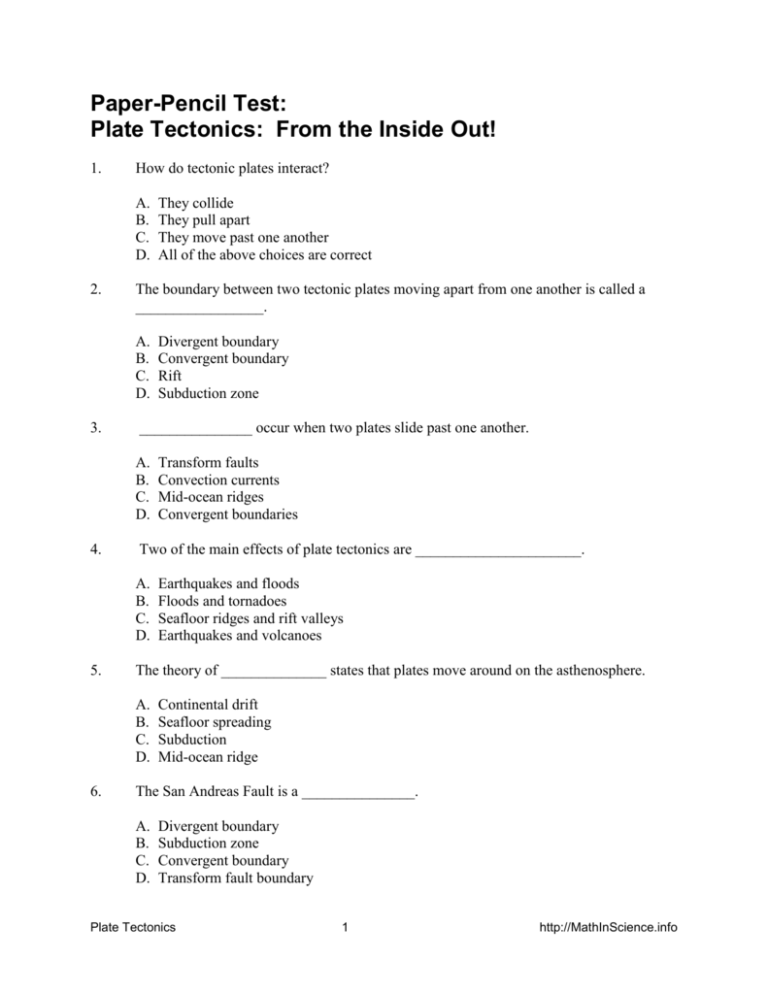
Paper-Pencil Test: Plate Tectonics: From the Inside Out! 1. How do tectonic plates interact? A. B. C. D. 2. The boundary between two tectonic plates moving apart from one another is called a _________________. A. B. C. D. 3. Earthquakes and floods Floods and tornadoes Seafloor ridges and rift valleys Earthquakes and volcanoes The theory of ______________ states that plates move around on the asthenosphere. A. B. C. D. 6. Transform faults Convection currents Mid-ocean ridges Convergent boundaries Two of the main effects of plate tectonics are ______________________. A. B. C. D. 5. Divergent boundary Convergent boundary Rift Subduction zone _______________ occur when two plates slide past one another. A. B. C. D. 4. They collide They pull apart They move past one another All of the above choices are correct Continental drift Seafloor spreading Subduction Mid-ocean ridge The San Andreas Fault is a _______________. A. B. C. D. Divergent boundary Subduction zone Convergent boundary Transform fault boundary Plate Tectonics 1 http://MathInScience.info 7. One of the best predictors of whether earthquakes will occur in a region is ___________. A. B. C. D. 8. An earthquake of magnitude - 7.5 has ____________ energy than a magnitude - 6.5 earthquake. A. B. C. D. 9. Twice as much Ten times as much 32 times less 32 times more A volcano is an opening in Earth’s surface that often forms a ___________ when layers of lava and volcanic ash erupt and build up. A. B. C. D. 10. A history of earthquakes there Presence of plate boundaries Both of the above choices are correct Neither of the above choices is correct Valley Mountain Landslide Mudflow The greatest number of active volcanoes is found ____________________. A. In the southern hemisphere B. In the Pacific Ring of Fire C. In the Mid-Atlantic Ridge 11. GIS, a computer-based technology for analyzing and displaying geographic or spatial data, is the acronym for: A. B. C. D. Geography’s Integrated Series Geographic Information System Geology’s Info System Graphics Internal Series Plate Tectonics 2 http://MathInScience.info
